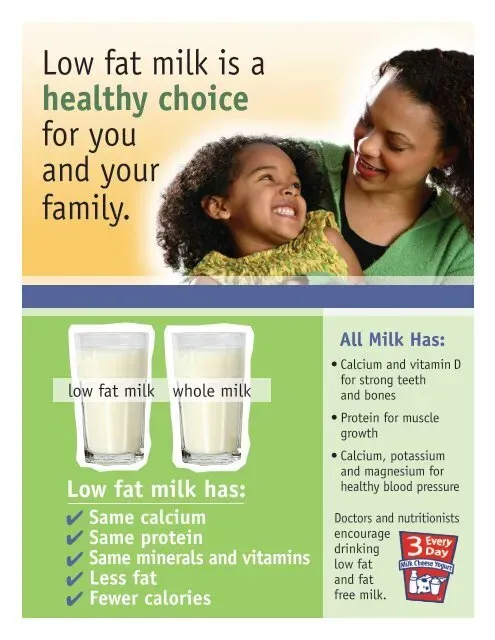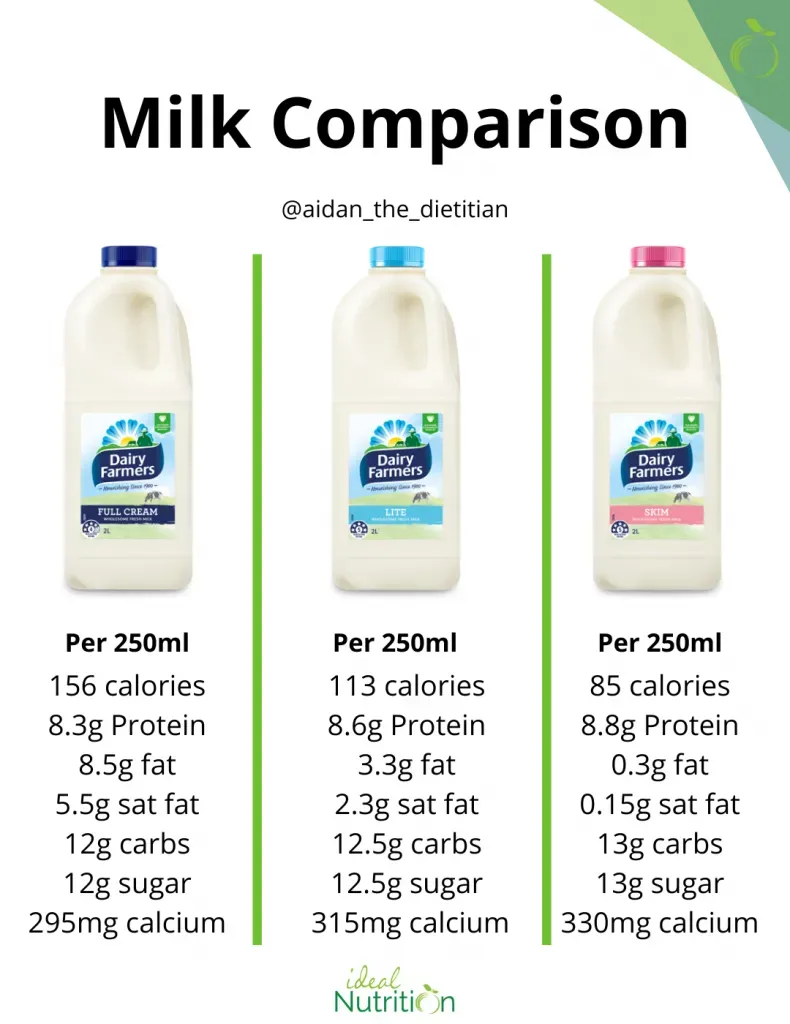Table of Contents
Walk down the dairy aisle and you're faced with a decision that feels more complicated than it should be. Whole milk, skim milk, and then there's that middle ground: 1% low-fat milk. For years, we've been told to cut fat, making 1% seem like a sensible compromise. But with shifting views on dietary fat, especially saturated fat, it's fair to ask: is 1 low fat milk good for you, really? Does ditching most of the fat mean you're missing out on something important, or are you dodging a bullet? We're going to dive into what makes 1% milk tick, how it stacks up against its fattier and skinnier cousins, and what the science actually says about its place in a healthy diet. Forget the old, tired advice for a second. Let's figure out if 1% is your dairy sweet spot or just another option on a crowded shelf.
Is 1 LowFat Milk Good For You? Understanding the Basics
Is 1 LowFat Milk Good For You? Understanding the Basics
Alright, let's cut through the noise and figure out what we're even talking about when we ask, is 1 LowFat Milk Good For You? At its core, the difference between milk types boils down to one thing: fat. Whole milk rolls in at about 3.25% milk fat. Skim milk, on the other end, strips away almost all of it, leaving less than 0.5%. Then there's our subject, 1% low-fat milk, sitting right in the middle with, you guessed it, 1% milk fat. It's essentially whole milk that's been put on a diet, losing roughly two-thirds of its fat content but keeping some to give it a bit more body than the watery feel of skim. This fat removal process also affects the calorie count and the levels of fat-soluble vitamins (like A and D, which are often added back in).
Beyond Just Fat: What's Really in 1% LowFat Milk?
Beyond Just Fat: What's Really in 1% LowFat Milk?
so we know 1% milk has less fat than whole milk, but that's not the whole story. This isn't just watered-down whole milk; it's still a nutritional powerhouse in many ways. You're getting a solid dose of protein in every glass, essential for building and repairing tissues. It's also a prime source of calcium, crucial for bone health – think preventing those creaky joints down the road. Most 1% milk is fortified with Vitamin D, which helps your body actually absorb that calcium, and Vitamin A, important for vision and immune function. So, while the fat content is lower, the core vitamins and minerals are still very much present, making it a nutrient-dense option for many people.
Does 1% LowFat Milk Stack Up Against Whole or Skim?
Does 1% LowFat Milk Stack Up Against Whole or Skim?
The Middle Ground vs. Full Fat
So, you've got 1% low-fat milk, sitting there looking all virtuous, right between the rich indulgence of whole milk and the watery austerity of skim. When you put 1% up against whole milk, the most obvious difference is the fat and, consequently, the calories. A glass of whole milk packs more saturated fat and total fat, which for decades was the big bad wolf of dietary advice. This meant 1% was often pushed as the "healthier" alternative simply because it had less of the feared nutrient. But here's where it gets interesting: recent research isn't so quick to condemn whole milk's fat anymore. Some studies suggest the fat in whole milk might help you feel fuller, potentially leading to eating less overall, or that the specific structure of dairy fat isn't as detrimental as saturated fat from other sources. So, while 1% wins on the "less fat" front, the real-world health implications compared to whole milk are a bit murkier than we once thought.
Comparing 1% to Skim
Now, let's look at 1% next to skim. Skim milk is the leanest option, practically devoid of fat. This makes it the lowest in calories among the three. From a purely calorie-counting perspective, skim milk takes the crown. However, many people find skim milk lacks the creamy texture and mouthfeel they enjoy, sometimes describing it as thin or even blue-ish. One percent milk retains just enough fat to give it a slightly richer texture than skim, making it more palatable for those who find skim milk unpleasant but still want to cut down on fat and calories compared to whole milk. Nutritionally, beyond the fat and calories, 1% and skim are quite similar, especially since both are typically fortified with vitamins A and D. So, the choice between 1% and skim often comes down to a trade-off between minimal calories/fat and a more satisfying texture.
Milk Type | Approximate Fat Content | Approximate Calories per Cup | Key Consideration |
|---|---|---|---|
Whole Milk | 3.25% | ~150 | Higher fat/calories, potentially more satisfying |
1% Low-Fat Milk | 1% | ~100-110 | Lower fat/calories than whole, better texture than skim |
Skim Milk | < 0.5% | ~80-90 | Lowest fat/calories, thinnest texture |
Health Implications: When Is 1% LowFat Milk a Smart Choice?
Health Implications: When Is 1% LowFat Milk a Smart Choice?
So, given everything we've discussed about fat content and nutrients, when exactly does reaching for 1% low-fat milk make the most sense? For starters, if you're actively managing your calorie intake but still want the nutritional punch of dairy – protein, calcium, vitamins – 1% is a pretty solid play. It offers significantly fewer calories and less saturated fat than whole milk, which can be helpful if those are specific targets in your diet plan, perhaps recommended by a doctor or dietitian. It's also a decent stepping stone if you're used to whole milk and find skim milk too thin; 1% gives you a bit more body and satisfaction while still cutting down on fat. Think of it as a middle-of-the-road option that balances nutrient density with reduced fat and calories compared to the full-fat version.
Making Your Pick: Is 1 LowFat Milk Good For Your Goals?
Making Your Pick: Is 1 LowFat Milk Good For Your Goals?
Aligning Milk Choice with Calorie and Fat Targets
Alright, let's get down to brass tacks. When you're asking, Is 1 LowFat Milk Good For Your Goals?, you first need to look at those goals. If your primary aim is reducing overall calorie intake or specifically limiting saturated fat, then 1% low-fat milk is often a solid contender. Compared to whole milk, you're immediately saving calories and saturated fat grams with every glass. This can be a simple swap that makes hitting your daily targets a bit easier, especially if you consume milk regularly, say in cereal, coffee, or smoothies. It’s a practical choice for someone who wants the nutritional benefits of dairy without the higher fat load of whole milk.
Considering Taste and Texture Preferences
Beyond the numbers, how milk *feels* and *tastes* matters. Let's be honest, for some, skim milk just doesn't cut it. It can feel thin, almost watery, and lacks that creamy richness that makes milk enjoyable for many. This is where 1% low-fat milk shines as a compromise. It retains just enough fat to give it a smoother, more satisfying texture than skim, without the heavier mouthfeel and higher calories of whole milk. If you've tried skim and hated it, but still want to move away from whole milk, 1% is often the perfect middle ground that keeps you from feeling deprived while still making a healthier choice.
So, before you grab a carton, ask yourself:
- What are my daily calorie goals?
- Am I trying to reduce saturated fat intake?
- Does the texture of skim milk bother me?
- How much milk do I typically drink in a day?
- Do I have any specific health conditions (like high cholesterol) influencing my fat intake?
Tailoring Your Choice to Specific Health Needs
Finally, whether Is 1 LowFat Milk Good For Your Goals? can also depend heavily on individual health circumstances. If you have specific dietary restrictions or health conditions, like diagnosed high cholesterol or heart disease, a healthcare professional might recommend limiting saturated fat intake. In such cases, 1% low-fat milk, with its significantly lower saturated fat content compared to whole milk, could be a more appropriate choice as part of an overall dietary plan. Conversely, for some individuals, particularly young children or those struggling to maintain weight, the extra calories and fat in whole milk might be beneficial. There's no one-size-fits-all answer; your personal health landscape is a major factor in making the right pick.
So, Is 1% Low-Fat Milk Your Dairy Destiny?
After sifting through the fat percentages and nutritional profiles, the question of whether is 1 low fat milk good for you doesn't have a simple, one-size-fits-all answer. It sits squarely between the creamy richness of whole milk and the near-zero fat of skim. It offers a decent dose of protein, calcium, and vitamins without the saturated fat load of whole milk, which might appeal if you're keeping a close eye on that. However, recent research suggests the fat in whole milk might not be the villain it was once painted, and some studies even link full-fat dairy to certain health benefits. Ultimately, the "goodness" of 1% milk depends on your overall diet, health goals, and what else you're consuming. It's a perfectly fine option for many, but it's not inherently superior or inferior to its dairy counterparts; it's just different. Choose based on what fits your nutritional needs and taste preferences, not just old habits.
